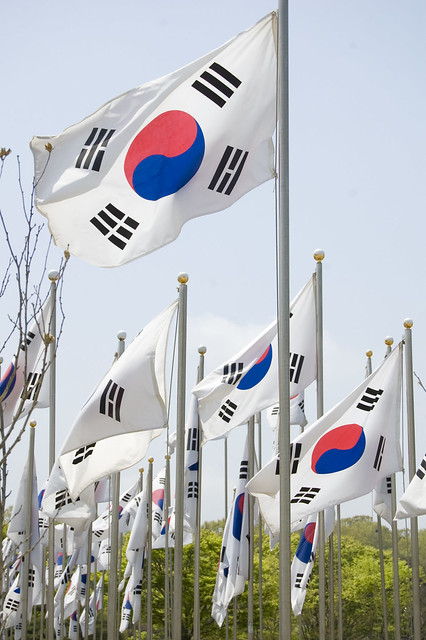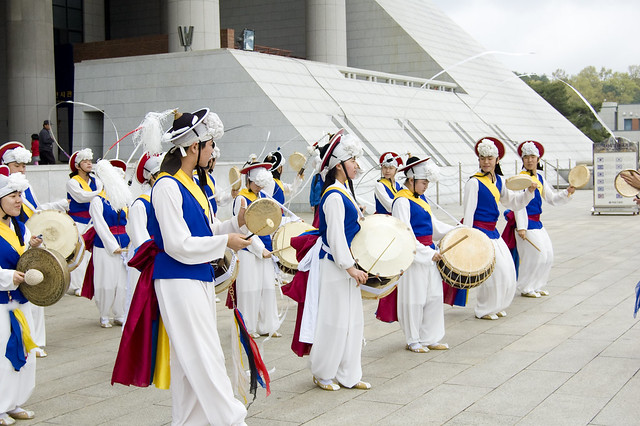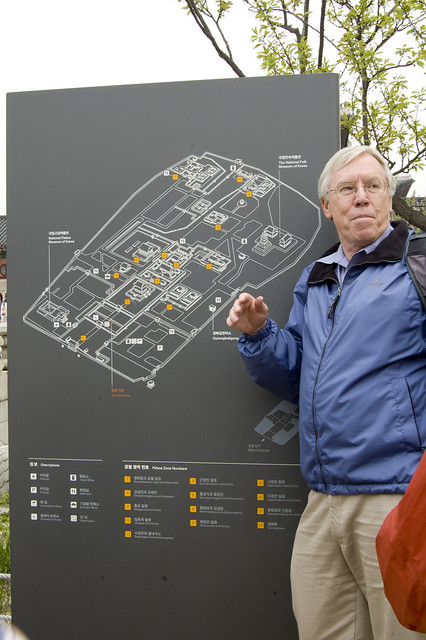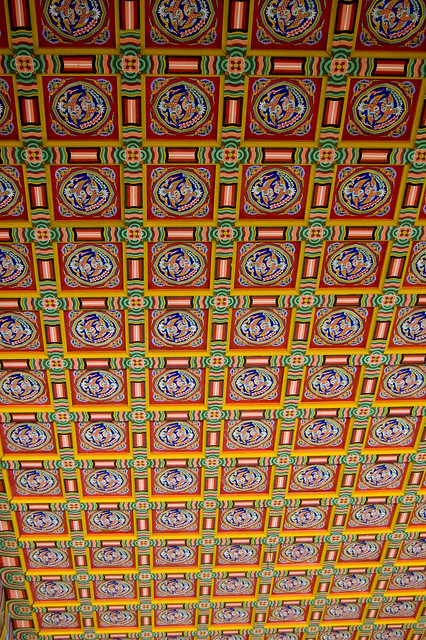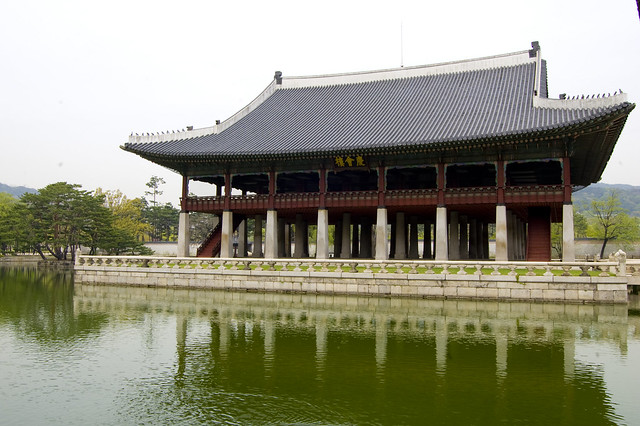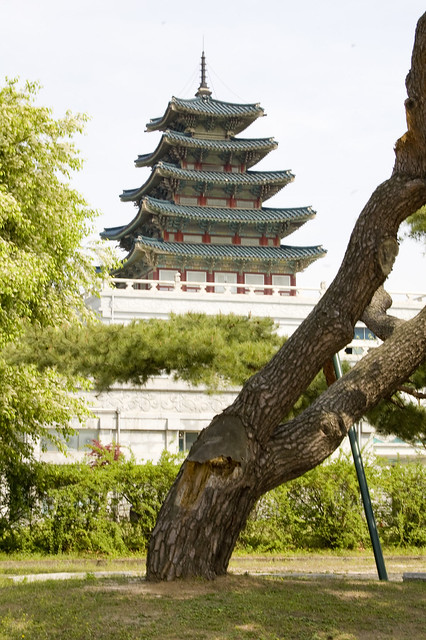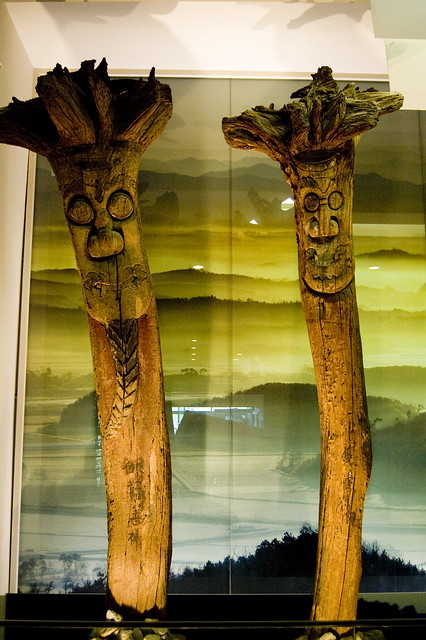By Saturday the 7th of May we were on the road to Gimhae, stopping at a few historical sites along the way. We all piled into a rented charter bus without any idea how long and exhausting this trip would turn out to be. Initially we played a game called Samyukgu (삼육구) which literally means “3, 6, 9”. The goal is to count in Korean using sino-Korean numbers, each person in the group saying the next number at their turn. However, whenever a number comes up that includes a 3, 6, or 9 the person taking the turn must clap rather than say the number out loud. Numbers including more than one of these numbers must clap for every time the number appears in the digit (Ex: 36, 69 and 99 all require 2 claps). So as the game begins, it sounds like this:
“Eel “ (1 =일)
“Ee” (2 = 이)
*Clap* (3 = 삼)
“Sah” (4 = 사)
“Oh” (5 = 오)
*Clap* (6 = 육)
“Chil” (7 = 칠)
“Pal” (8 = 팔)
*Clap* (9 = 구)
“Ship” (10 = 십)
I think the highest we ended up getting to was around 60. It’s a great way to practice numbers but it’s easy to slip up and get out. Before too long we figured out that the best way to pass the time was napping – this we did a lot of since the ride ended up taking all day with our two stops.
The first stop was at the Independence Hall which includes 7 different museums and a huge monument at the front. It’s meant to symbolize the future unity of the two Koreas – now they are divided (at the tips of the prongs) but eventually they move closer together until they are joined. I’m not sure which side is supposed to be which Korea, but for the sake of South Korean pride, I’m going to venture a guess that the worn out side North Korea and the crisp structured side is South Korea. The museums depict Korea’s early history and independence from various invading/oppressive influences. Compared to museums in the states, Korean museums are very graphic! There were very disturbing displays regarding assassinations, comfort women, prisoners, riots, etc. It was all technically PG-13 but I was glad that our time constraints forced us to merely pass through these various museums.
Afterwards the bus driver showed us an awesome place to eat nearby, and we feasted on kalbi – sangchusam (상추삼) style (aka using lettuce to make wraps filled with meat, rice and veggies).
Another couple hours of driving landed us at destination number 2 which was the print museum in Kyoung-ju (경주). We learned all about Korea’s being credited with the world’s earliest book published using metal moveable type in 1377 – much earlier than Gutenberg’s printing press. The book is called the Jikji (직지) and is a kind of digest of Buddhist concepts. The Jikji is actually a volume 2 and the other volume(s) are missing. In addition to creating the world’s oldest known metal moveable-type book, Korea also is credited with creating the world’s oldest printed document EVER, dated to before 751 A.D. The museum seemed to be more focused on showing off the Jikji, but I agree with Dr. Peterson that the museum should play up this second (and I think greater) accomplishment a lot more. There is only a brief timeline that addresses this significant and amazing fact. At the gift shop I purchased paper with which I was able to obtain a printing of part of a book written by King Sejong (from a replica of the original wooden block of course). I got to rub the ink on the paper myself and everything! It was pretty neat.
It was late by the time we got to the Gimhae hanokchon (김헤 한옥촌) but since we hadn’t had dinner yet we went to a nearby restaurant to have Gomtang (곰탕) which is kind of like ox tail soup.


